Share As A Gift
Share a paywall-free link to this article.
This feature is only available for subscribers.
Start your subscription for as low as $4.95. Already a subscriber?
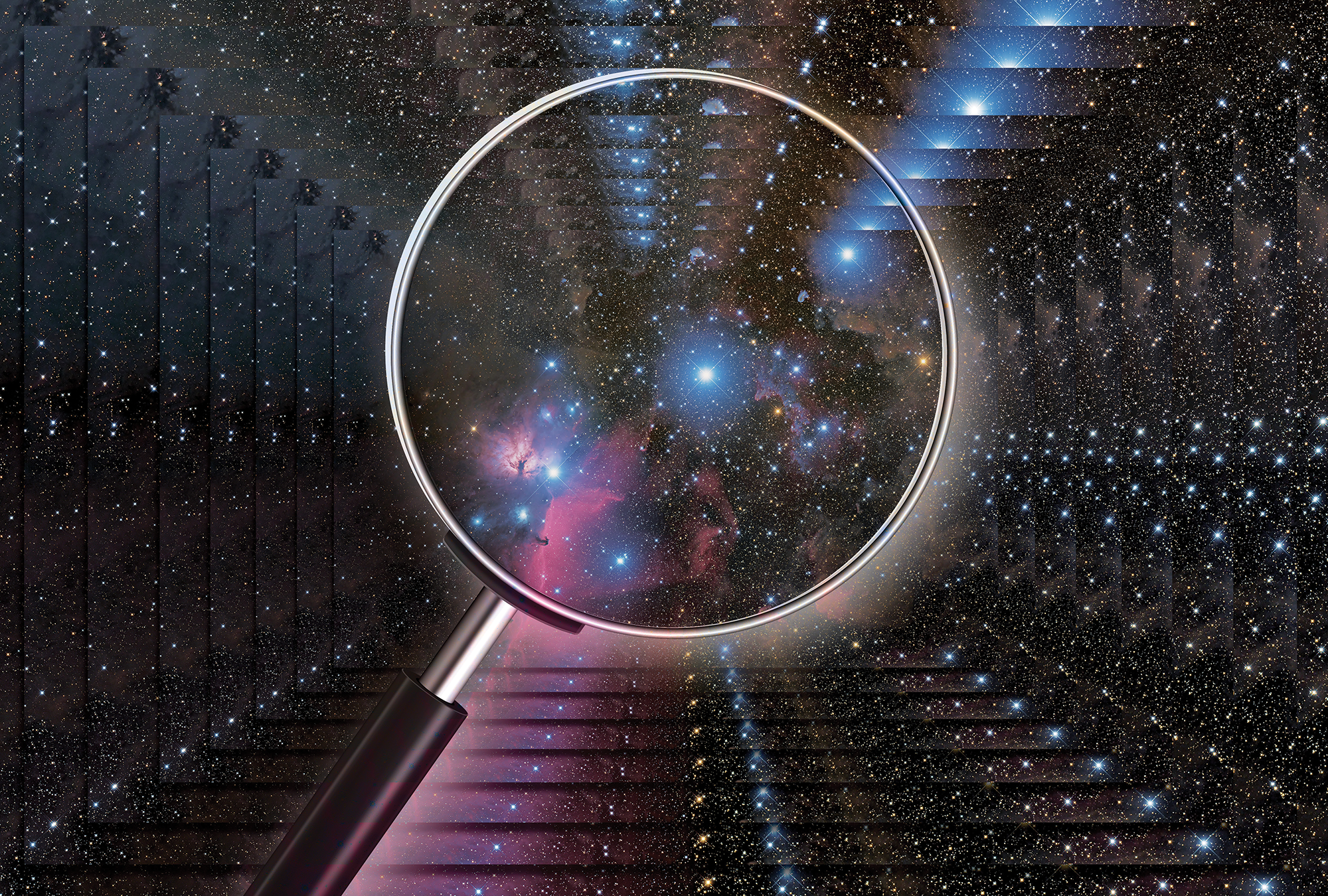
Nebulae in the constellation Orion / Maarten Vanleenhove / Flickr
THE SKIES ABOVE can give us a daily reminder that we are intrinsically part of God's creation. God not only created us with intent, but God also reached out to meet us in human history.
In this season of Advent, we remember the coming of Jesus Christ to earth. God became fully human and lived among us (John 1:14). As Eugene Peterson paraphrased it, “The Word became flesh and blood, and moved into the neighborhood” (John 1:14, MSG). Jesus’ body, like ours, was made of atoms that were once between the stars. In his incarnation, Jesus not only took up human form and human DNA but took up atoms that tied him to our planet, our sun, and the stars beyond. Yet he was still fully God!
Jesus Christ is the cosmic Creator. As John 1 declares, “All things came into being through him, and without him not one thing came into being” (verse 3). I am still amazed whenever I remember that God, Creator of the galaxies, became one of us and walked the dusty roads of Palestine. How can humanity be insignificant if the Creator took on our form?
Many years ago on a January night, I had several astronomy students with me near Flagstaff, Ariz., to study galaxy clusters with a research telescope. On a break from operating the sophisticated equipment, we walked outside to take a look at the stars with our naked eyes. We all could identify major constellations or star patterns such as Orion (below, the line of horizontal stars in the middle is the belt of the warrior Orion), but this was a rare chance to view them in the clear desert air, far from city lights. A multitude of faint sparkling stars filled the spaces that usually looked empty. We noticed details in the shapes of constellations that we had never seen before.
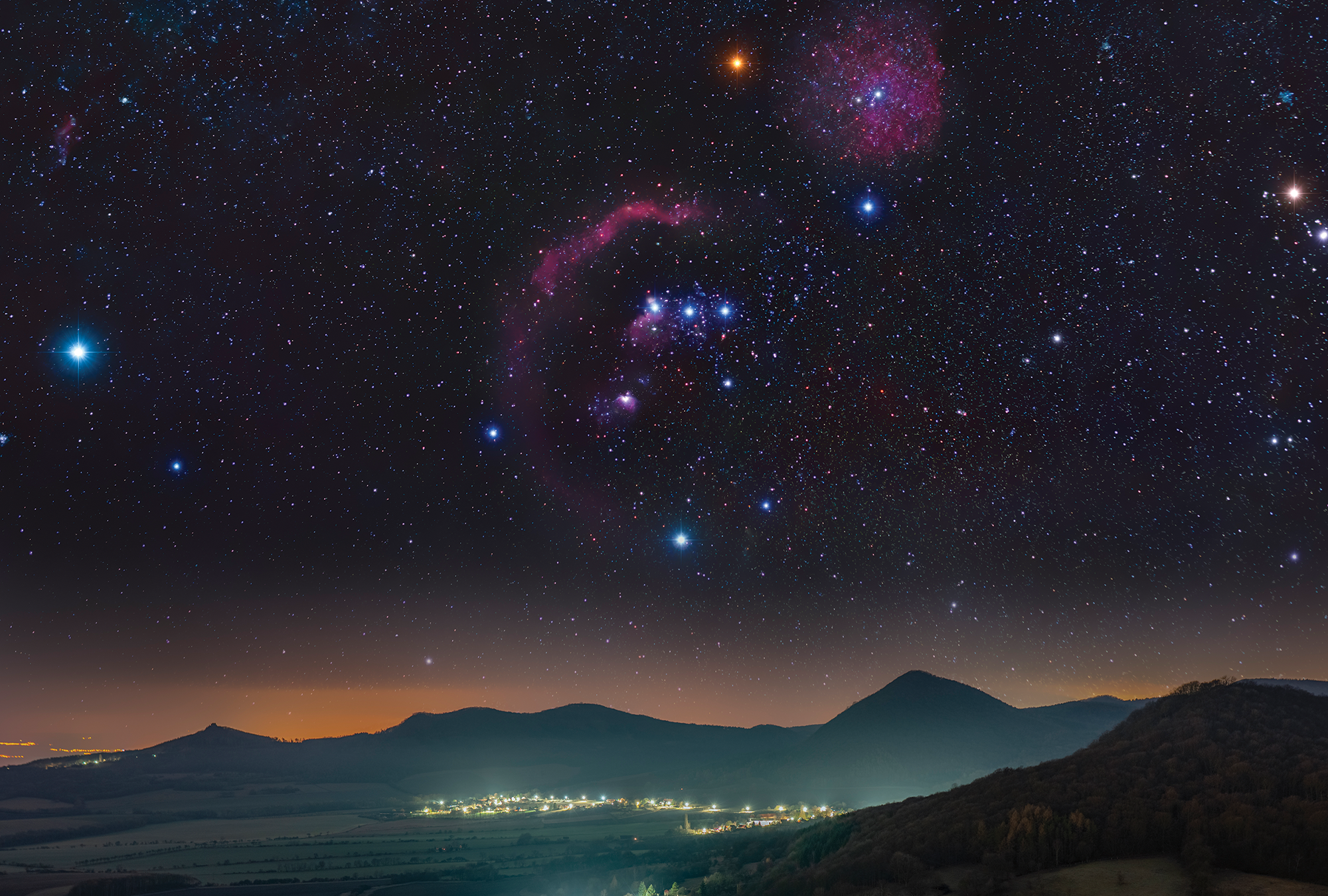
The constellation Orion over the Central Bohemian Highlands in the Czech Republic / Vojtěch Bauer
Before electric lighting, everyone had great views of the night sky. People were familiar with the constellations and the regular motions of the moon and planets. Despite modern lighting and modern distractions, the wonders of the night sky are still ours today. Think back to a time when you were outdoors at night and looked up. Maybe you saw the full moon above a city skyline, or the arc of the Milky Way over a rural field. Do you recall the sense of wonder you felt?
Viewing the heavens takes us beyond ourselves. Whatever troubles we’re living with, looking up reminds us of cosmic beauty and a larger reality. We are part of a vast universe that is beyond our circumstances and beyond our control.
Modern telescopes now reveal abundant wonders far beyond what our eyes can see. In 2019, the first photographic evidence of a black hole was released (below), the result of a tour de force effort by 11 telescopes around the world. This black hole—an object where the gravity is so intense that even light cannot escape—is located at the core of the galaxy M87 in the constellation Virgo. In the image, the dark space at the center isn’t empty, but contains a mass 6.5 billion times more massive than our sun. All we see is the material at the edge of the black hole, glowing just before it falls in.
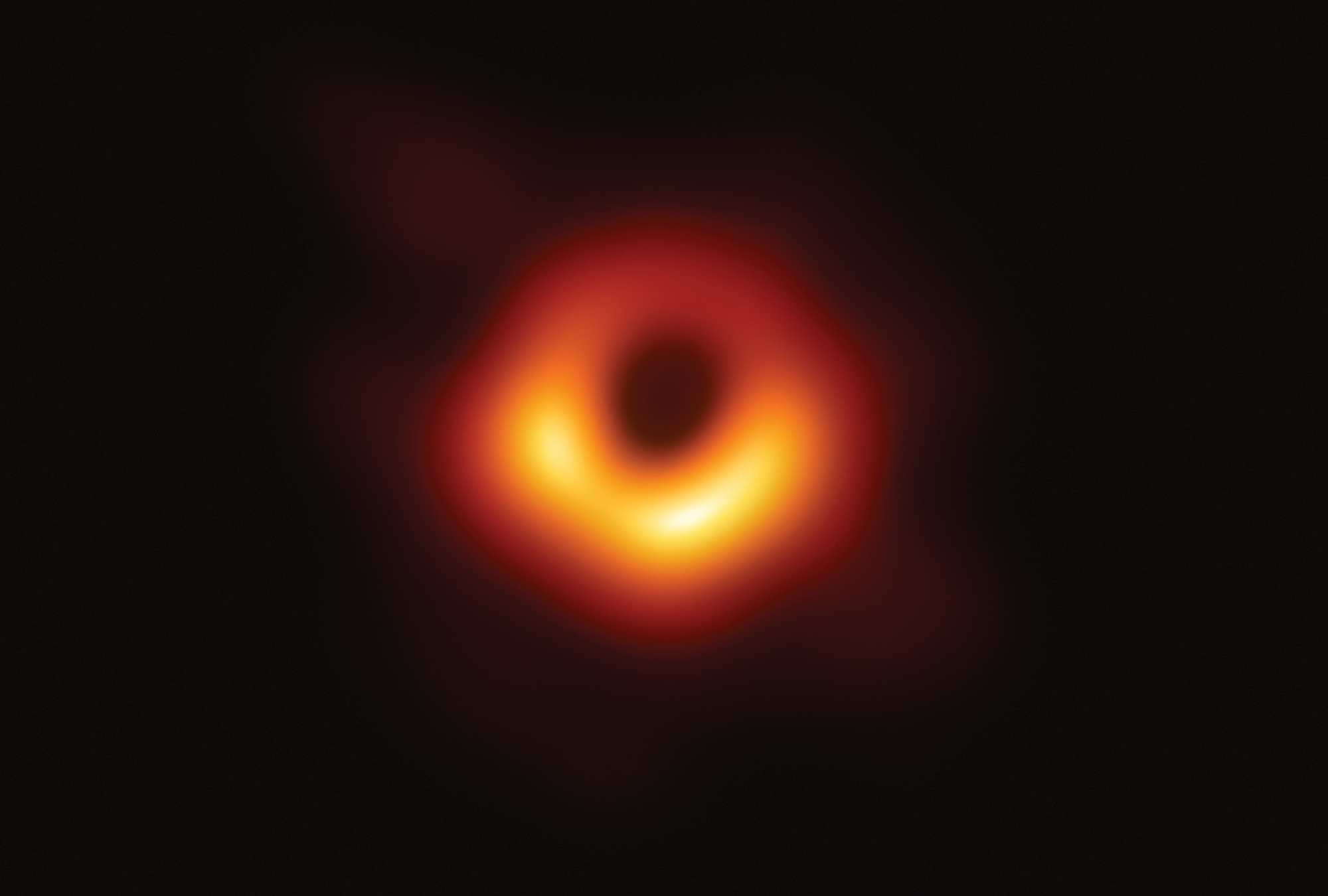
The first visual evidence of a black hole in the center of galaxy M87 / EHT Collaboration
FOR PEOPLE OF faith, the sense of wonder at the night sky goes deeper than spectacle. We know that the heavens are declaring not their own glory, but the glory of God (Psalm 19:1). The universe didn’t arise on its own or from an impersonal force. Rather, there is a Creator behind this universe. The One who made the stars in the night sky and the massive black holes is the same God we encounter in the Bible and in our prayers. A scientific explanation doesn’t replace God—it can’t replace God. Science may explain how a black hole works, but our faith shows us the One who made it.
Through the natural world, God’s attributes are revealed to us in displays of God’s glory, power, and beauty. We experience that revelation as embodied people. While the flat photographs of galaxies and black holes are amazing, how much more wondrous is the bodily experience of the natural world. When we gaze at the stars on a chilly winter night or hike in the mountains on a warm summer day, we not only see nature—but we feel it, hear it, smell it. Nature brings God’s revelation home to our senses in ways that words simply cannot.
Psalm 19 describes the stars as declaring, proclaiming, and pouring forth speech, yet without words. By transcending language, the heavens speak to people of all cultures and nations, calling everyone to know the Creator. The European Protestant reformer John Calvin described the world as the theater of God’s glory, with God as the principal actor clothing himself with nature, “the visible splendor of his apparel.” Calvin pictured God using nature to evoke our desire for intimacy with God. To ignore the wonders of the created world is to miss God courting us!
IF YOU HAVEN'T read it lately, check out Psalm 29, a majestic portrayal of God’s glory in a thunderstorm. After seeing the lightning, hearing the thunder, and feeling the whirlwind, all people join with the storm to cry “Glory!” Humans are called to join the non-living creation in praise to God. We are fellow creatures with the stars and the mountains. Jesus even said that if his disciples kept quiet, “the stones would shout out” (Luke 19:40). St. Francis of Assisi wrote a beautiful canticle of gratitude for “Brother Sun and Sister Moon” in which Francis comes alongside his companion creatures in praise of the Most High. Humans are the verbal part of creation’s praise to God; of all the creatures, we were the ones created in God’s image to reflect God most clearly (Genesis 1:26-27). If we fail in our part, we impact everything else.
We are fellow creatures with the sun and moon not only because we were made by the same Creator, but because we are made of the same stuff. The interstellar nebula called Westerlund 2 (below) shows this process in action. A nebula is a cloud of gas and dust between the stars. Westerlund 2’s beautiful colors are caused by different types of gasses, all glowing in the light of the stars. The dark finger-shaped regions are dust clouds, and at the tips of these fingers, hidden within them, are baby stars in the process of forming. This nebula in our own Milky Way is a stellar nursery. A star forms here when a swirling clump of gas and dust collapses under gravity until the center becomes dense enough for fusion to occur. In the image, the cluster of stars in the middle-right recently formed from this nebula.
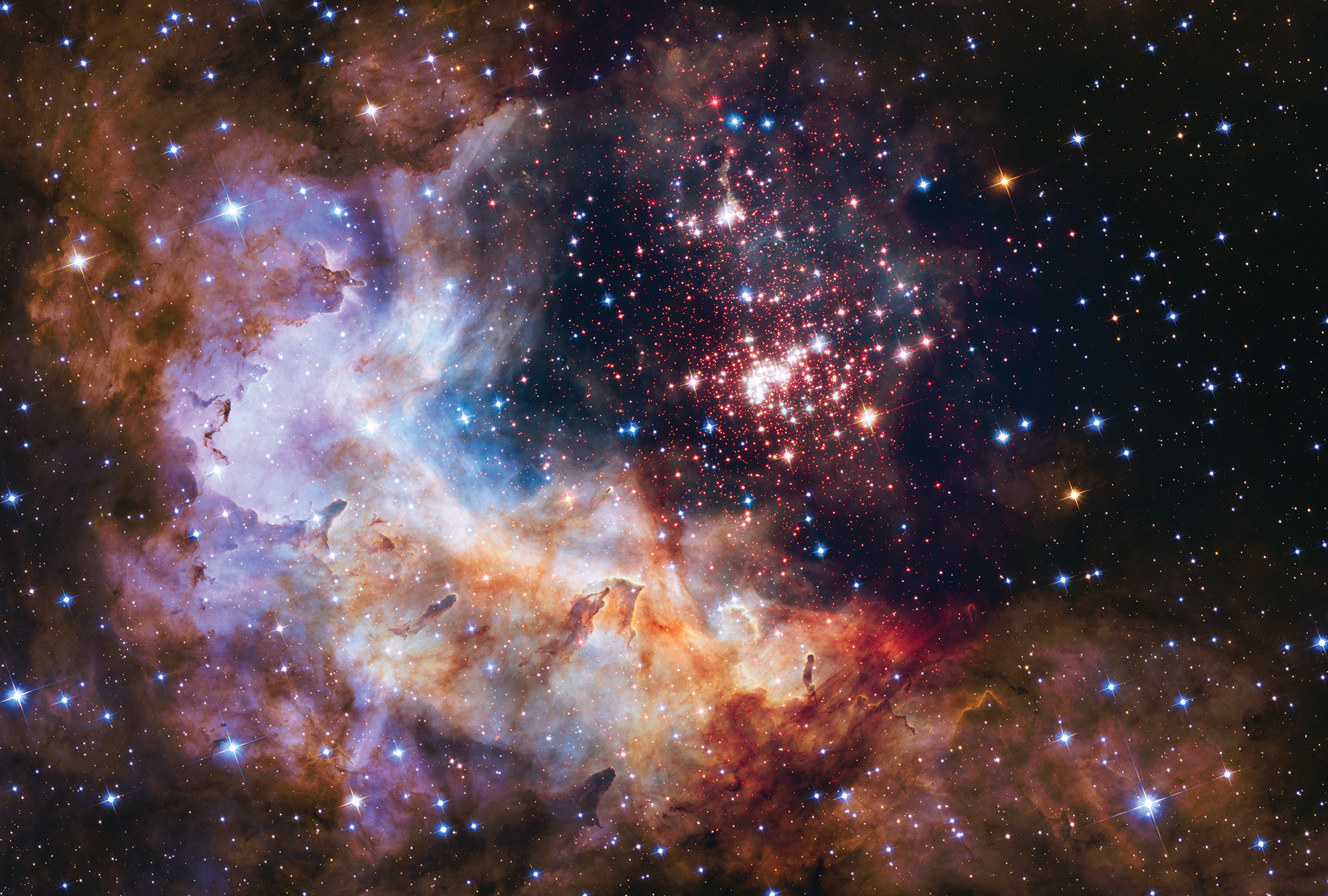
The interstellar nebula Westerlund 2 / NASA, ESA, the Hubble Heritage Team (STScI/AURA), A. Nota (ESA/STScI), and the Westerlund 2 Science Team
When the swirling dust clump is collapsing, some of it forms into a disk around the young star. That disk eventually coalesces into planets orbiting the star, which means that the atoms in planets such as ours were once part of a beautiful interstellar nebula such as Westerlund 2. The carbon, nitrogen, and iron atoms in our bodies were once between the stars; we are made of star dust. We are part of the universe and not separate from it.
Some scientists use natural explanations such as these to argue that God did not create us or that God is irrelevant. But a scientific explanation does not replace God—science and God are not in competition. Science tells us how God goes about making stars, but that doesn’t mean God is absent. While we believe that God certainly has the power to do a miracle—for example, to simply speak the word and have stars or people pop into existence—we also believe that God can use non-miraculous means to create. God made us from the dust of stars, and that dust in turn was made previously by God using mechanisms we understand scientifically, such as gravity and fusion.
In both the scientific picture and in the scriptural picture of Genesis 2:7, we see that God chose to work slowly, with dust. The choice of method does not change God’s intent. We were created to bear God’s image, to know and love God as embodied people with ties to the rest of this marvelous creation.
BEFORE MODERN SCIENCE, the thousands of stars visible in the night sky already pointed to uncountable abundance (Genesis 15:5). With modern astronomy, we know our galaxy contains hundreds of billions of stars. And our galaxy isn’t alone. Arp 273 in the constellation Andromeda (below) is a beautiful pair of galaxies that each contain hundreds of billions of stars.
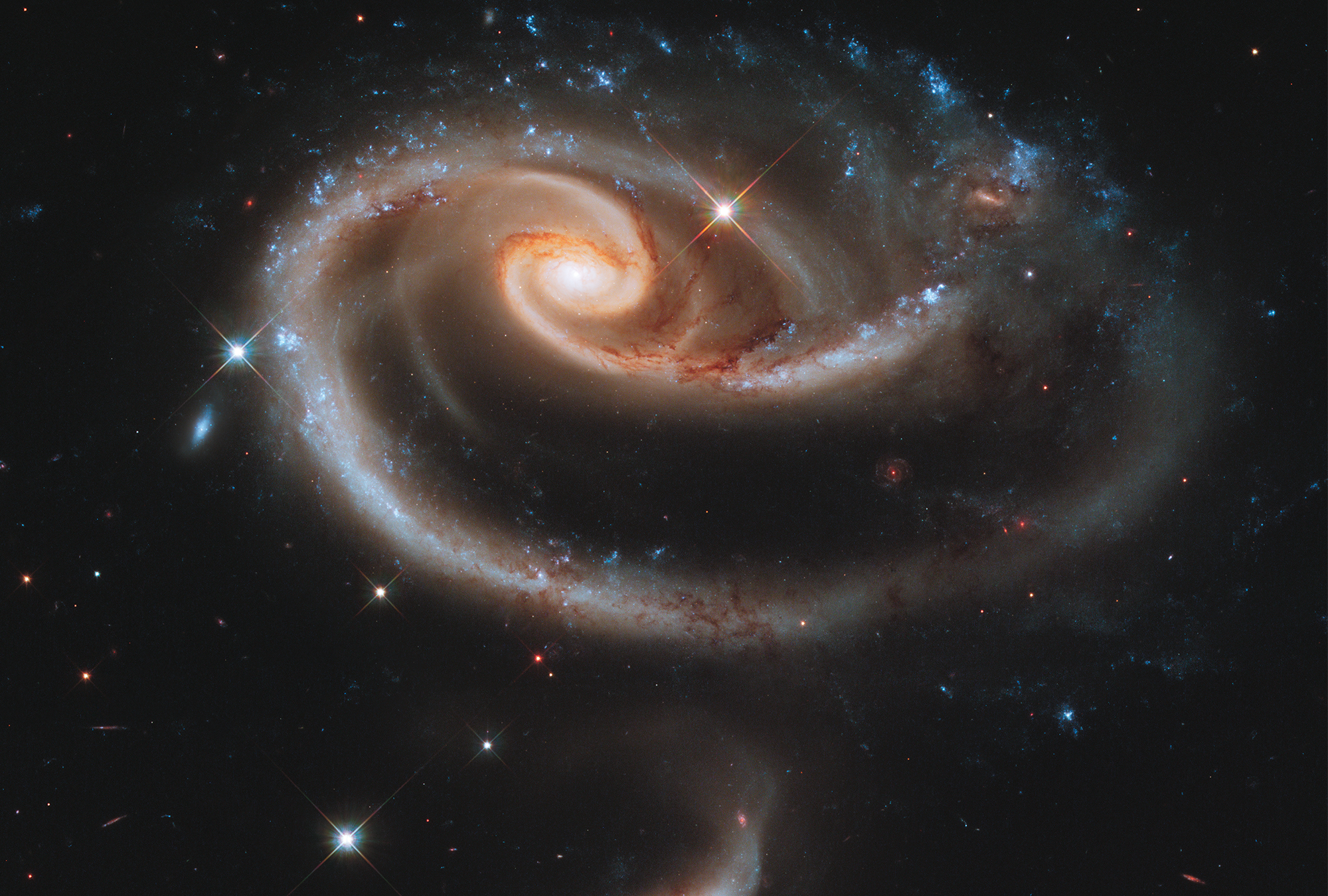
The paired galaxies of Arp 273 / NASA, ESA and the Hubble Heritage Team
Galaxies such as Arp 273 were around long before humans noticed them. The sheer abundance of creation, previously unknown to us, suggests that God has purposes in creation that are beyond us. One of God’s purposes seems simply to delight in created things. In Genesis 1, God calls the various parts of the natural world “good” before making humans. In Job 39, God describes wild animals and celebrates their features, most of which have little practical use to humans. “The wings of the ostrich flap joyfully, though they cannot compare with the wings and feathers of the stork,” God tells Job (verse 13). As theologian Richard Mouw has preached, God’s capacity for delight seems to far exceed our own.
The universe contains not just a few galaxies, but billions of galaxies. One of my favorites is an entire cluster of galaxies called Abell 370 in the constellation Cetus (below next paragraph). Each of the yellow dots in that image is not a star, but an entire galaxy of hundreds of billions of stars. Our own galaxy, the Milky Way, would be small compared to Abell 370, about the size of one of the smaller dots. And humans are miniscule compared to our galaxy—an invisible speck. The vast physical scale of the universe is overwhelming.
But what does our smallness mean? Astronomer Carl Sagan gave an atheist perspective: “We find that we live on an insignificant planet of a humdrum star lost in a galaxy tucked away in some forgotten corner of the universe.”
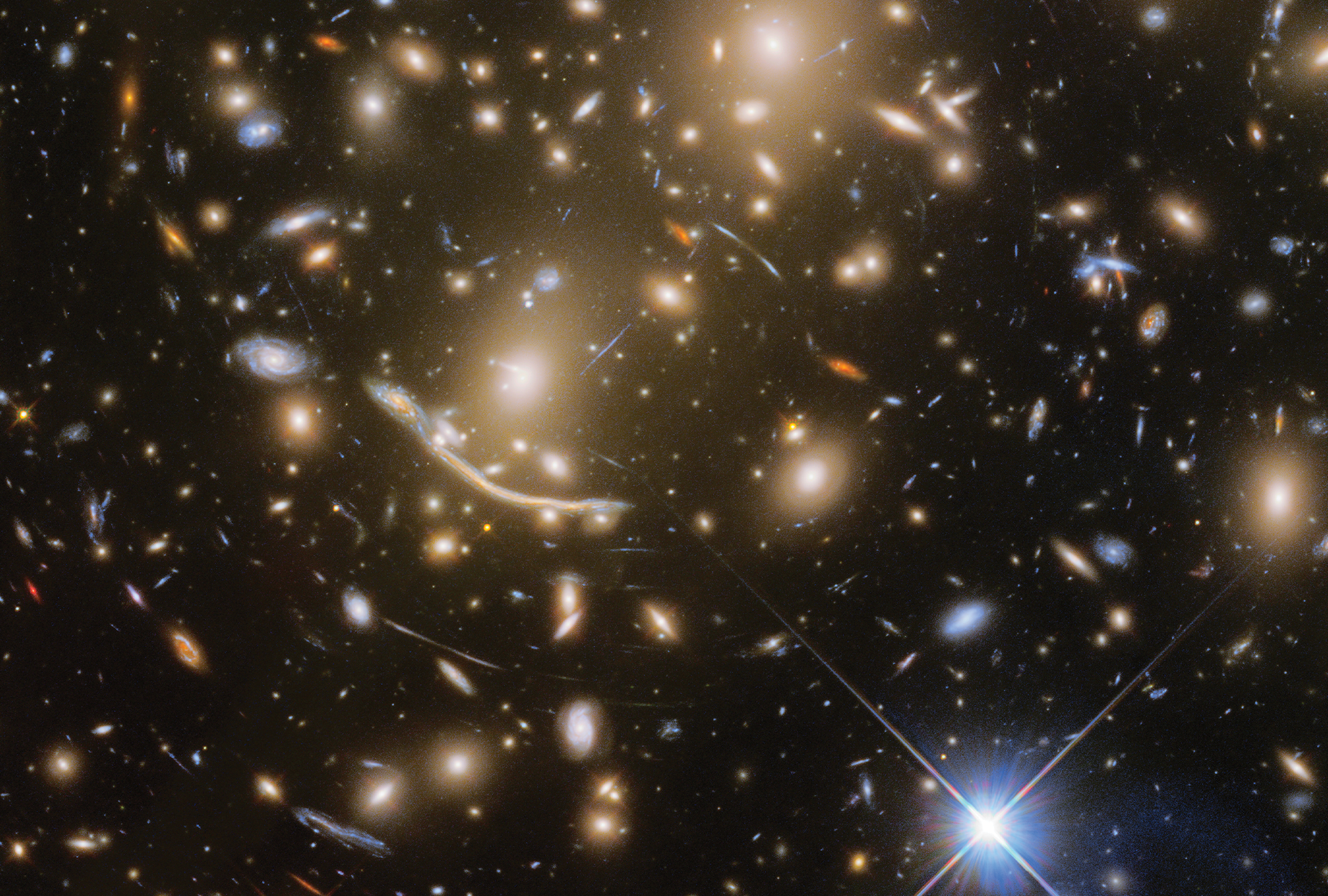
Abell 370, a cluster of galaxies in the constellation Cetus / NASA, ESA / Hubble, HST Frontier Field
Lost? Forgotten? Christianity tells a better story of our human place in God’s creation. The Bible doesn’t deny that we are physically small. In fact, God reminds Job repeatedly that Job doesn’t have God’s knowledge and power over creation (see Job 38). God actually refers to the constellations by name, saying that humans can’t change the stars of the Pleiades. We can’t loosen the belt of Orion. We have no power over the stars and constellations in the night sky, much less over massive galaxy clusters like Abell 370. Yet the Bible tells that we are significant in the cosmos. Even before God met us in history in Jesus Christ, God created us with a purpose.
THE QUESTION OF humanity’s significance was around long before modern science. The psalmist asks, “When I consider your heavens, the work of your fingers, the moon and the stars which you have set in place, what is humankind that you are mindful of them, human beings that you care for them?” (Psalm 8:3-4). Today we could replace “moon and stars” with “black holes and galaxies” but the question remains. An answer is given in the next verses: “You have made [humans] a little lower than God, and crowned them with glory and honor. You have given them dominion over the works of your hands” (verses 5-6).
Although God made us part of creation, we were given a responsibility distinct from other creatures. “We are more than dust,” as Old Testament professor John Walton reminds us. God created us to be more than what we’re made of. In fact, we’re called to serve this planet with “dominion.” In scripture, those with dominion are commanded to not be selfish nor abuse the governed. They are commanded to shepherd and care for the governed, to take special care of the oppressed. God gave us the role of shepherding and caring for this planet, giving us a significant responsibility in our solar system.
One small action we can take as stewards of creation is to reduce light pollution so that more people can see the Milky Way. While not harmful to life and health like other pollution, light pollution hinders our view of the heavens. Many light fixtures unnecessarily direct light upward where it scatters off the atmosphere and creates an orange glow over cities. Fortunately, we can safely illuminate nighttime activities by installing light fixtures that direct the light only downward where needed. Consider taking children in light-polluted areas out into “dark sky” country for some star gazing, so they can experience for themselves how the heavens declare the glory of God.
This Advent I invite you to look up when you walk outside at night. The next time it’s not cloudy, take a moment to enjoy the stars, planets, or moon. In November and December this year, you have the opportunity to see three bright planets at once—Jupiter, Saturn, and Venus. Look for three bright dots, low in the southwest sky, about 30 minutes after sunset (an empty athletic field can be a good viewing spot). If it’s clear from Dec. 6 to 8, look for the crescent moon passing right next to the three planets. This is also a great season to view the Orion constellation (in the southern sky later in the evening) and the Pleiades star cluster (nearly overhead).
As you gaze at the heavens, don’t rush. Take a moment to pause. Exhale. Remember that the atoms in your body were once dancing between the stars, that we are “fearfully and wonderfully made” (Psalm 139:14) to be part of this planet and called to care for it. Listen for God courting you through the beauty and wonder of God’s creation.
Though we cannot “bind the chains of the Pleiades” or “loosen Orion’s belt” (Job 38:31), we can take a moment to join our song with that of the constellations in declaring the glory of God.
Got something to say about what you're reading? We value your feedback!